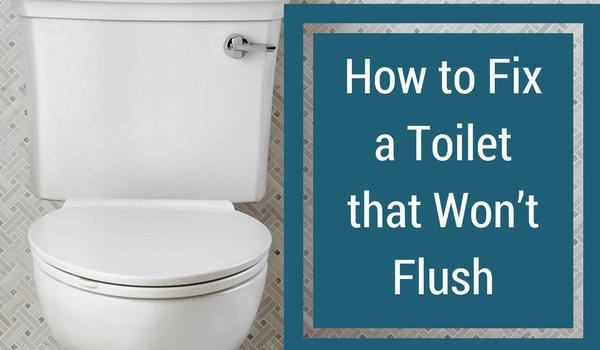
One of the most common residential plumbing complaints is a toilet that will not flush properly. Typically, the issue is relatively easy to fix, but first, the source of the problem must be identified before you can determine the right way to resolve it.
Clearing a Clogged Toilet
Perhaps the most common cause of an improperly flushing toilet is a clog, which is often caused by flushing inappropriate materials down the toilet. Two simple household tools that typically do the trick for unclogging a toilet include:
- Plunger – A plunger is used to create suction around the drain hole of the toilet, then an up and down motion is used to create a force with that suction that will dislodge the source of the clog, allowing water to again flow freely.
- Toilet Auger – Similar to a drain auger or “snake” that is used to clear clogs caused by hair buildup in shower drains, the toilet auger is specially designed to avoid damaging the toilet. Snaking this tool through the toilet’s drain hole and moving it around can cause the obstruction to move along or be broken into smaller pieces that can then be flushed.
If neither of these solutions works, but you’re sure the problem is a clog, it may be time to call a plumber. If you experience frequent clogs, consider switching toilet paper brands to a product that is easier to flush – get advice from a professional plumber in choosing a brand that is less likely to clog your system.
Should a Toilet Tank Empty When Flushed?
The short answer is: yes. When you flush a toilet, you pull upwards on a chain that is attached to a rubber flapper. This flapper is at the bottom of your toilet’s tank, and it creates a seal that does not allow water to pass when the toilet isn’t being flushed. When the toilet is flushed, the chain pulls up on the flapper, breaking the seal and allowing water to rush out of the tank and into the toilet bowl for a successful flush.
For a flush to be sufficiently forceful and long, the flapper should not come back down to stop the flow of water until the tank is at least 80% drained. If the toilet is not flushing completely, some issues with the flapper and chain could include:
Flapper chain has too much slack. The flapper chain should only have about ½ inch of slack. Any longer, and it might not stay open long enough for a complete flush. Fortunately, the solution is simple: just remove the chain and then re-hook it on a link closer to the flapper.
Old or cracked flapper. Flappers wear degrade over time, and a cracked or old flapper won’t maintain a tight seal. Replacement parts are relatively inexpensive and can be purchased at your local hardware store.
Toilet Not Flushing Completely? Check the Water Level.
A common cause of toilets not flushing completely is insufficient water in the tank. As a successful flush relies on a rush of water coming down from the tank into the toilet bowl, not enough water means not enough force, and the toilet may only partially flush. Check the water level in the tank. Most tanks have a manufacturer’s mark denoting where the water level should be, but if not, the best level is typically about an inch below the overflow pipe.
Mineral Buildup and Other Issues
In some cases, the rim holes around the upper rim of the bowl that allow water into the bowl from the tank can become blocked with lime, calcium, and other mineral deposits. As this slows the flow of water, the toilet may have issues fully flushing. To diagnose this problem, use a small mirror tilted upward beneath the toilet rim to examine the rim holes. If they seem to be clogged with mineral deposits, clean them with a specialized toilet cleaner specifically for this purpose, or run a vinegar solution through the toilet. You may also need to insert and remove a small piece of wire into the rim holes to dislodge and remove deposits.
When in doubt, it’s always better to call a professional plumber than to take on a plumbing project you aren’t prepared to deal with. At Benjamin Franklin Plumbing Cedar Rapids, we’re here to help with all your household plumbing needs.
